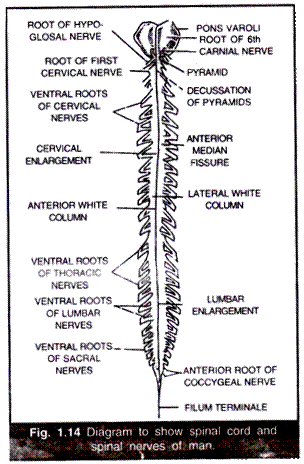ADVERTISEMENTS:
The Phosphorus cycle, unlike those of Carbon and Nitrogen cycles lacks an atmospheric component.
The global phosphorus cycle involves only aquatic and soil compartments. As a basic constituent of nucleic acids, phospholipids and numerous phosphorylated compounds, phosphorus is one of the nutrients of major importance to biological systems.
Further, as Hutchinson has noted, because the ratio of phosphorus to other elements in organisms tends to be considerably greater than the ratio of phosphorus in the available and primary sources, phosphorus becomes ecologically significant as the most likely limiting or regulating element in productivity.
ADVERTISEMENTS:
Basic source and the great reservoir of phosphorus are the rocks or other deposits which have been formed in the past geological ages. These are gradually eroding, releasing phosphates to ecosystems. But much phosphate escapes into the sea where part of it is deposited in the shallow sediments and part of it is lost to the deep sediments (Fig. 5.9).
However, the means of returning phosphorus to the cycle are inadequate to compensate for the loss. The principal global flux of phosphorus consists of the movement of about 21 x 1012 g P yr.-1 from the terrestrial pool to the oceans through the rivers. Phosphate fertilizers, used in agriculture, are added to the soil at a rate of about 14 x 1012 g yr-1, which is also carried into the oceans by runoff and rivers (Schlasinger 1991, Caraco 1993).
 Much phosphate becomes lost to this central cycle by physical processes, such as sedimentation, which take it out of the reach of upwelling and major water circulation. Biological process, such as the formation of teeth and bone, and excretion also account for considerable losses from the major portion of cycle.
Much phosphate becomes lost to this central cycle by physical processes, such as sedimentation, which take it out of the reach of upwelling and major water circulation. Biological process, such as the formation of teeth and bone, and excretion also account for considerable losses from the major portion of cycle.
The fish and marine birds are also important in phosphorus cycle. The latter have apparently played an important role in returning phosphorus to the cycle. In this context we can consider the tremendous deposits of guano (the manure of sea birds) along the western coast of South America.
ADVERTISEMENTS:
Although man harvests a lot of marine fish, according to Hutchsinson, only about 60,000 tons of elementary phosphorus per year is returned in this manner, compared with one to two million tons of phosphate rocks which are mined and most of which are washed away and lost.
For their nutrition plants absorb water dissolved inorganic phosphates from the soil either as di-hydrogen phosphate (H2PO4) or as hydrogenphosphate (HPO4) (Fig. 5.10) and convert these into organic phosphate.The latter is transferred to animal consumers and decomposers.
Decomposers return phosphorus to the soil as the phosphate ion. Phosphate absorbed from the soil is returned to it in dead plant and animal organic residues, which are converted to humus by the action of soil microorganisms. Much of the phosphate in the soil is fixed or adsorbed on to soil particles but some is lost through leaching out into watercourses.
In fresh water, the floating algae or phytoplankton rapidly absorb soluble inorganic phosphates and convert them into organophosphates (Fig. 5.11). Algae provide food for zooplankton which in turn are consumed by other animals. All plants and animals eventually die and in due time their organic remains or debris decay through the action of microorganisms, and phosphates are released into the water for recycling. In aquatic plants, phosphorus, limits plant growth.
Certain specialized fungi play an important role in phosphorus cycle. In many cases plant species have mycorrhizae (fungus roots), a mutualistic relationship between a non-pathogenic fungus and living plant root cells (Salisbury and Ross, 1985). These mycorrhizae play an important role in soil nutrient cycling.
Experiments conducted with radioactively labeled elements show that the plant benefits from an increase in the rate at which it can take up phosphate and other limiting nutrients or water; the fungus in turn receives organic compounds from the plant.
Natural phosphate cycle can be very much affected by pollution. Agricultural fertilizers containing superphosphate or triple superphosphate are now frequently used in the fields; and sewage, even after treatment, contains phosphates derived from excreta and detergents.
These phosphates can eventually reach freshwater streams and rivers through the land run-off and effluent discharge. Phosphate pollution of rivers and lakes has caused excessive growth of algae, which depletes the dissolved oxygen content of water and disrupts the natural food chains.

